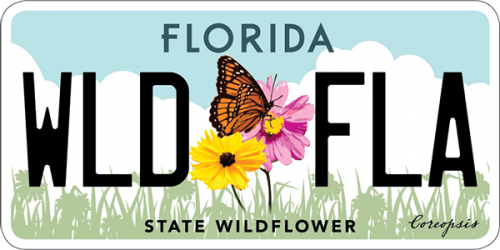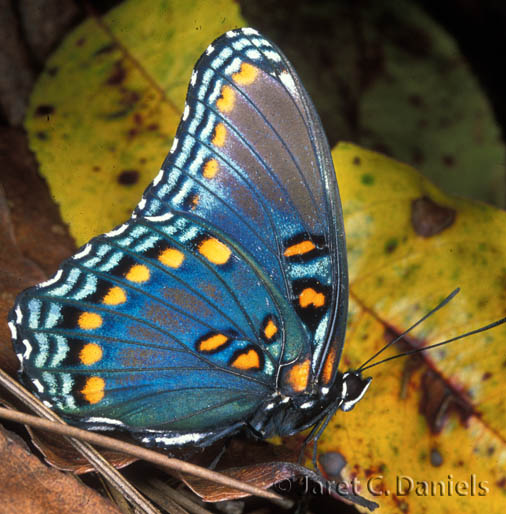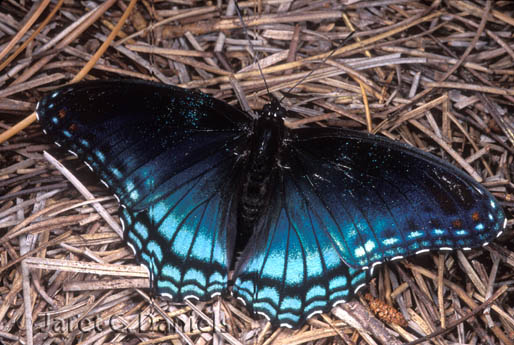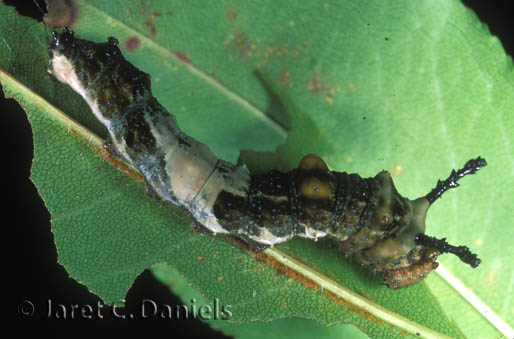- Family name: Nymphalidae/Brush-Footed Butterflies
- General description: Black; hindwind with iridescent blue scaling along outer margin; ventral hindwing dull brown-black with orange basal spots and a postmedian band of prominent orange spots
- Field Marks: Black; hindwing with iridescent blue along outer margin; ventral hindwing brown-black with prominent orange spots.
- Sexes: Appear similar
- Wingspan: 75-100 mm
- Life Cycle: Egg: Green, laid singly on the tip of host leaves Mature larva: Green-brown with white markings, a white saddle and a pair of knobby tubercles off the thorax Chrysalis: Mottled brown and white
- Number of Generations: Two or three generations
- Flight Season: All year
- Abundance: Common
- Habitat: Deciduous forest margins and openings, woodland trails, utility easements, stream corridors, parks
- Larval Host Plants: Wild Cherry (Prunus serotina), Deerberry (Vaccinius staminiun), Carolina Willow (Salix caroliniana)
- Similar Species: Pipevine Swallowtail
- Additional Information: Mimics distasteful Pipevine Swallowtail; adults visit rotting fruit, dung, and sap flows.
- Range in Florida
 The Florida Wildflowers & Butterflies projects at the Florida Museum are sponsored in part by the State of Florida and the Florida Wildflower Foundation, Inc.
The Florida Wildflowers & Butterflies projects at the Florida Museum are sponsored in part by the State of Florida and the Florida Wildflower Foundation, Inc.


